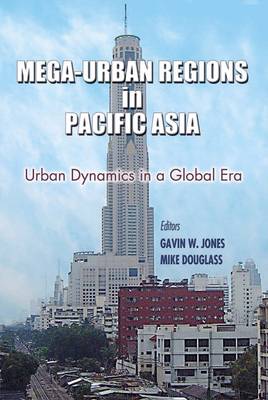
- Afhalen na 1 uur in een winkel met voorraad
- Gratis thuislevering in België vanaf € 30
- Ruim aanbod met 7 miljoen producten
- Afhalen na 1 uur in een winkel met voorraad
- Gratis thuislevering in België vanaf € 30
- Ruim aanbod met 7 miljoen producten
Zoeken
Mega-Urban Regions in Pacific Asia
Urban Dynamics in a Global Era
Paperback | Engels
€ 28,95
+ 57 punten
Omschrijving
Southeast Asia contains four urban conglomerates of the sort that this study characterizes as Mega-Urban Regions â " Jakarta, Manila, Bangkok and Ho Chi Minh. These locations are examined in this book, along with Taipei and Shanghai. Because the administrative boundaries of the cities at the core of these zones do not include the entire urban area, the significance of the broader urban community has largely escaped scholarly attention. The authors base their analysis on actual agglomeration size rather than administrative boundaries, and draw on unpublished census data to study the dynamics of these massive urban zones, considering area and population size as well as social and demographic patterns of change in core, inner and outer zones. They conclude that these mega-urban regions continue to increase their share of national populations, and zones immediately beyond the official metropolitan boundaries are where the most dramatic changes are occurring.
Specificaties
Betrokkenen
- Vertaler(s):
- Uitgeverij:
Inhoud
- Aantal bladzijden:
- 416
- Taal:
- Engels
Eigenschappen
- Productcode (EAN):
- 9789971693794
- Verschijningsdatum:
- 1/01/2008
- Uitvoering:
- Paperback
- Formaat:
- Trade paperback (VS)
- Afmetingen:
- 150 mm x 226 mm
- Gewicht:
- 557 g

Alleen bij Standaard Boekhandel
+ 57 punten op je klantenkaart van Standaard Boekhandel
Beoordelingen
We publiceren alleen reviews die voldoen aan de voorwaarden voor reviews. Bekijk onze voorwaarden voor reviews.







